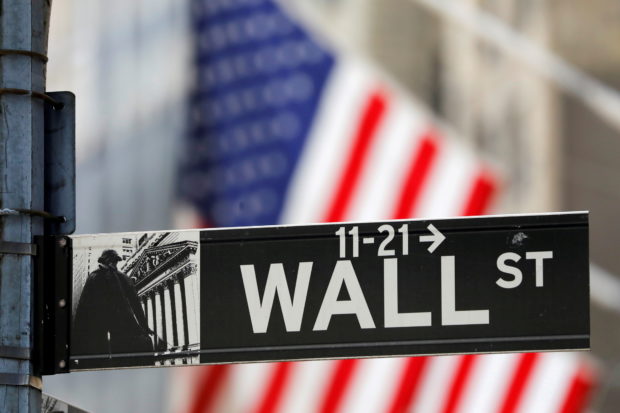
(REUTERS/File Photo)
NEW YORK – Wall Street closed lower on Thursday at the end of a holiday-shortened week as bond yields resumed their uphill climb and investors contended with mixed earnings and economic data.
All three major U.S. stock indexes posted weekly losses ahead of the Good Friday holiday.
“It’s a combination of continued worries still there,” said Ryan Detrick, chief market strategist at LPL Financial in Charlotte, North Carolina. “It’s a mixed bag earning season so far, and that, coupled with high inflation and the hawkish Fed have led to selling ahead of the holiday weekend.”
Rising 10-year Treasury yields pressured growth stocks, dragging the S&P 500 and the Nasdaq deeply into negative territory, while the Dow posted a more modest loss.[US/]
“The higher yields pressure higher growth stocks as their net present value … takes a hit when yields go higher,” Detrick said.
A quartet of large U.S. banks shifted the first quarter reporting season into overdrive, with Goldman Sachs Group Inc, Citigroup Inc, Morgan Stanley, and Wells Fargo & Co all posting results.
While all four beat Street estimates, they also reported steep profit declines. Their share price reaction was mixed, and were last moving in the range of up 1.6% (Citigroup) to down by 4.5% (Wells Fargo). The broader S&P 500 Finance index fell 1.0%.
“There’s some concerns this earnings season,” Detrick added. “Expectations are the lowest since the recovery started and it’s got investors cautious of how companies will step up to the earnings altar in the comings weeks.”
A host of economic data showed spiking gasoline prices helped retail sales beat consensus and prompted the largest jump in import prices in nearly 11 years.
The data falls in lockstep with other recent indicators, which appear to cement aggressive inflation-curbing actions from the Federal Reserve in the coming months, including a series of 50 basis point interest rate hikes.
Tesla Inc Chairman Elon Musk offered to take Twitter Inc private with a $41 billion cash offer. The social media company’s shares oscillated throughout the session but closed down 1.7%.
The Dow Jones Industrial Average fell 113.36 points, or 0.33%, to 34,451.23, the S&P 500 lost 54 points, or 1.21%, to 4,392.59 and the Nasdaq Composite dropped 292.51 points, or 2.14%, to 13,351.08.
Of the 11 major sectors in the S&P 500, tech shares fared the worst, sliding 2.5%.
The first-quarter reporting season is still in its infancy, with 34 of the companies in the S&P 500 having reported.
Analysts now expect aggregate annual S&P 500 earnings growth of 6.3%, less optimistic than the 7.5% growth projected at the beginning of the year.
Thursday marked the monthly expiration for options contracts, an occurrence that has in the recent past helped amplify stock market gyrations as investors make adjustments to account for millions of expiring options contracts on stocks, ETFs and indexes.
Declining issues outnumbered advancing ones on the NYSE by a 1.83-to-1 ratio; on Nasdaq, a 2.02-to-1 ratio favored decliners.
The S&P 500 posted 33 new 52-week highs and 14 new lows; the Nasdaq Composite recorded 66 new highs and 218 new lows.
Volume on U.S. exchanges was 10.45 billion shares, compared with the 12.22 billion average over the last 20 trading days.